By Gerda Krogslund, Middletown Master Gardener Volunteer
This article appeared in the April 2021 Issue of Gardening in Orange County.
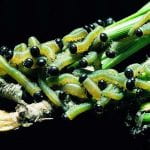
In New York State, there are six species of sawflies that are common pests of pines. Sawfly larvae are caterpillar-like and usually feed in groups and strip one branch of needles after another. They prefer old needles, but turn to new needles when food is scarce. The European pine sawfly (Neodiprion sertifer) is one of the most destructive in New York State. It prefers red and Scotch pine, however it will also attack other pines in the area.
Life Cycle
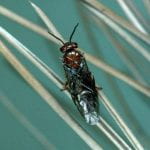
Sawfly adults resemble large houseflies but are actually closely related to wasps and sometimes referred to as ‘stingerless wasps.’ Females European pine sawflies have a serrated ovipositor, a tube-like organ used for egg laying, which enables them to saw little slits in the needles to lay their eggs leaving a row of brown scars on the needles. The eggs overwinter and may start to hatch as early as April or as late as mid-May. The larvae feed in colonies for several weeks. When the larvae are fully grown, they drop to the ground and pupate. Then in September adults emerge and mate. Then the females use their saw-like ovipositor to lay 6-8 eggs per pine needle.
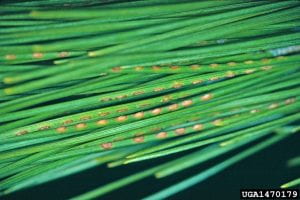
Management
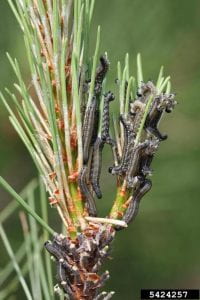 When European pine sawfly eggs hatch birds and rodents help decrease the number of larvae on your pines, but sometimes additional management is needed. You can remove larvae by hand or prune out infested branches. Put larvae and branches in a pail of soapy water.
When European pine sawfly eggs hatch birds and rodents help decrease the number of larvae on your pines, but sometimes additional management is needed. You can remove larvae by hand or prune out infested branches. Put larvae and branches in a pail of soapy water.
If you chose to use an insecticide, keep in mind that as with most insects, sawflies are more susceptible to insecticides when they are small. There are horticultural oils and insecticidal soap labeled for control of sawflies. If you chose to use an insecticide make sure you read the entire label and follow all of the instructions including the use of personal protective equipment. The label is the law! And remember sawflies are NOT caterpillars so Bt, a go to organic pesticide for many home gardeners, will not work on sawflies.
Fun Facts
Sawfly larvae are often mistaken as caterpillars, but it is quite easy to tell the difference if you know what to look for.
Both caterpillars and sawflies have three sets of true legs (six legs in total). These are located near the head. After the true legs are a series of prolegs. Caterpillars have five or fewer pairs of abdominal prolegs while sawfly larvae have six or more pairs of abdominal prolegs.

Look at the picture above. You can see three pairs of true legs. (The first pair is a bit hard to see; it is between the head and the pair of true legs sticking straight up in the air.) After the true legs there is a gap and then seven pairs of abdominal prolegs. There is also a pair of anal prolegs at the very end of the body. Since seven is more than five, this must be a sawfly larvae.
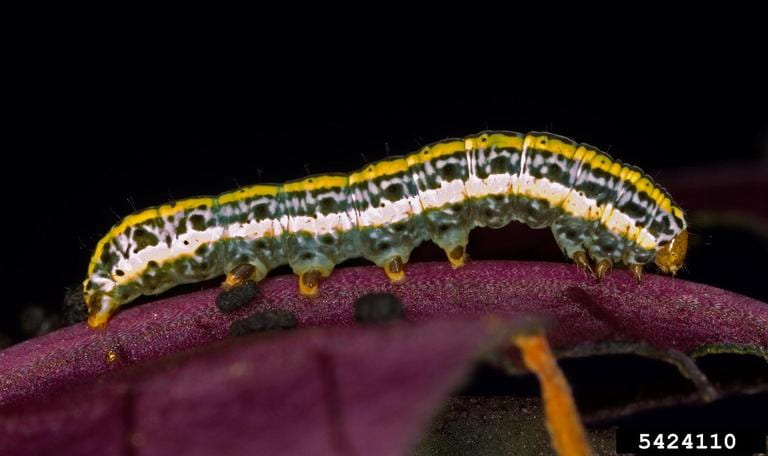
Look at the picture above. You can see three pairs of true legs right behind the head. Then there is a gap followed by four pairs of abdominal prolegs. There is also a pair of anal prolegs at the very end of the body. Since four is less than five, this must be a caterpillar.
Resources
European Pine Sawfly – Penn State Extension
Is it a Sawfly Larva or a Caterpillar? – The Ohio State University
Pine Sawflies – University of Kentucky
